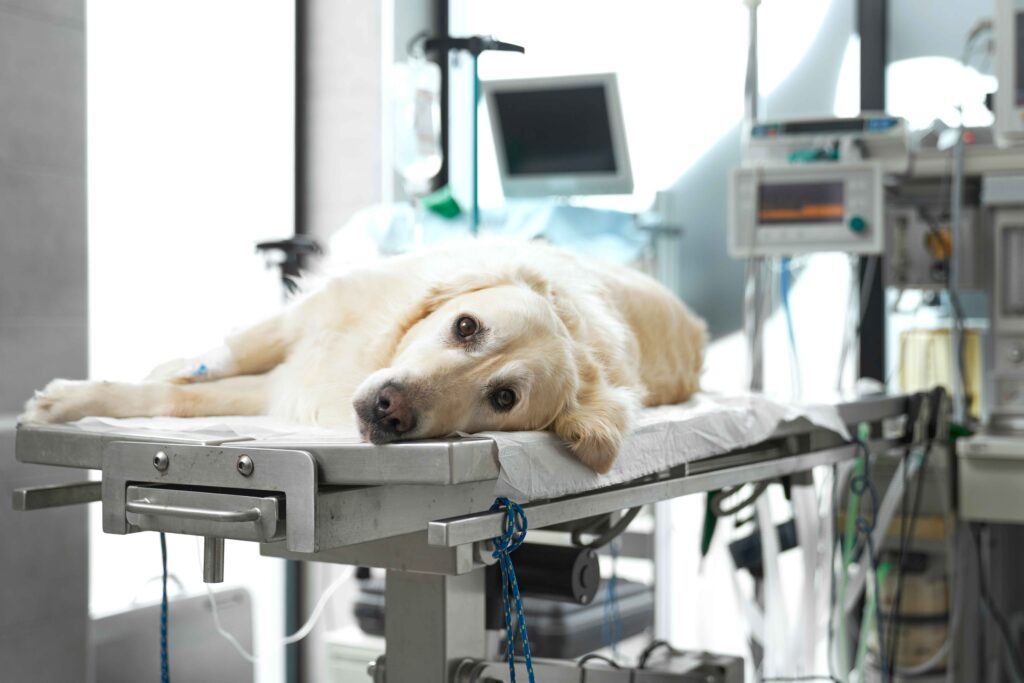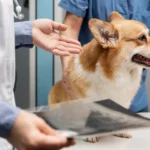
Contents
As dogs age, their bodies undergo numerous changes, and one of the most common health issues affecting senior dogs is kidney disease. Kidney disease, particularly chronic kidney disease (CKD), is a progressive condition that impairs the kidney’s ability to filter waste and regulate fluid balance. Unfortunately, kidney disease in dogs is often detected too late, when the kidneys have already suffered significant damage.
Monitoring your senior dog for early signs of kidney disease can help detect the condition before it becomes advanced. In this blog, we will discuss the symptoms of kidney disease in dogs, how to spot them early, and what you can do to manage your dog’s health before it’s too late.
What is Kidney Disease in Dogs?
It refers to any condition that causes the kidneys to lose their ability to filter waste, maintain proper hydration, or regulate electrolyte balance. There are two main types of kidney disease:
- Acute Kidney Disease
Acute kidney disease occurs suddenly, often due to toxins, infections, or injuries that directly affect the kidneys. This type of kidney disease can sometimes be treated successfully if caught early. - Chronic Kidney Disease (CKD)
Chronic kidney disease is more common in older dogs and is a progressive condition that develops slowly over time. In CKD, the kidneys gradually lose function, making it harder for the body to remove waste and maintain fluid balance. Unfortunately, CKD is irreversible, but with early detection and management, it’s possible to slow the progression of the disease.
Causes of Kidney Disease in Dogs
This disease in dogs can have a variety of causes, including:
- Age
Chronic kidney disease is more common in older dogs, with the kidneys naturally losing some function as they age. This makes older dogs more susceptible to kidney issues. - Genetics
Certain dog breeds are genetically predisposed to kidney disease, such as Cocker Spaniels, Schnauzers, and Persian cats. If your dog belongs to a breed with a higher risk, it’s important to monitor their kidney health more closely. - Toxins
Exposure to toxins like antifreeze, certain medications, or household chemicals can lead to acute kidney failure. Chronic exposure to these toxins may also contribute to long-term kidney damage. - Infections
Urinary tract infections (UTIs) and other infections can affect kidney function if left untreated. The kidneys can become inflamed, leading to scarring and long-term damage. - High Blood Pressure
High blood pressure can damage blood vessels in the kidneys over time, leading to kidney disease. It is important to manage hypertension in dogs, especially in older animals. - Dental Disease
Oral health is often overlooked, but dental disease can contribute to kidney disease. Bacteria from infected teeth can enter the bloodstream, damaging organs such as the kidneys.
Symptoms of Kidney Disease in Dogs
It can be difficult to spot the early signs of kidney disease in dogs, especially because the symptoms can be subtle or easily mistaken for other conditions. However, recognizing the early signs of kidney disease can allow for early intervention and better management of the disease. Some common symptoms to watch for include:
- Increased Thirst and Urination
One of the earliest and most noticeable symptoms of this disease in dogs is increased thirst (polydipsia) and urination (polyuria). Dogs with kidney disease are unable to concentrate urine properly, causing them to drink and urinate more frequently. - Loss of Appetite and Weight Loss
Dogs with kidney disease often lose their appetite and may begin to lose weight. This can be due to nausea or a lack of interest in food, both of which are common in dogs with kidney dysfunction. - Vomiting and Diarrhea
In dogs, vomiting and diarrhea are common symptoms of kidney disease. When the kidneys are unable to remove waste from the blood, toxins build up, leading to gastrointestinal upset. - Lethargy or Weakness
As the kidneys become less efficient, your dog may begin to feel weak and lethargic. This is often due to a buildup of toxins and an imbalance in the electrolytes needed for normal muscle function. - Bad Breath (Uremic Breath)
Dogs with kidney disease often develop bad breath, sometimes described as uremic breath or ammonia-like breath. This occurs due to the buildup of waste products in the blood that are normally filtered out by the kidneys. - Poor Coat Condition
As kidney disease progresses, you may notice that your dog’s coat becomes dull, dry, and brittle. This is because the body’s ability to distribute nutrients to the skin and coat is compromised. - Mouth Ulcers
In severe cases of kidney disease, dogs may develop mouth ulcers, which can cause pain and further reduce their ability to eat and drink. - Weakness in the Legs
In advanced kidney disease, dogs may develop weakness in their rear legs due to an imbalance of electrolytes, particularly calcium and phosphorus. - Severe Dehydration
Dehydration is common in dogs with kidney disease because their kidneys are unable to concentrate urine. Signs of dehydration include dry gums, sunken eyes, and a lack of skin elasticity.
How to Monitor for Subtle Signs of Kidney Disease
Since the early stages of kidney disease can be subtle, regular veterinary checkups are essential for senior dogs. Here are some ways you can monitor your dog for kidney disease:
- Regular Vet Check-ups
Schedule annual or semi-annual veterinary exams, especially for senior dogs. Your vet can check your dog’s kidney function with blood work and urine tests to detect early signs of kidney disease before symptoms become severe. - Track Changes in Drinking and Urination
Keep track of how much water your dog is drinking and how often they are urinating. Increased thirst and urination are often the first signs of kidney disease, so monitoring these behaviors can help you detect issues early. - Monitor Appetite and Weight
Pay attention to your dog’s eating habits and weight. A loss of appetite or weight loss can indicate kidney issues, along with other potential health problems. - Check for Vomiting and Diarrhea
If your dog experiences frequent vomiting or diarrhea, especially alongside other symptoms of kidney disease, contact your vet for evaluation. - Check for Bad Breath or Oral Health Issues
Regularly check your dog’s breath and teeth. If you notice foul-smelling breath or signs of oral health issues such as gum disease or mouth ulcers, it’s important to visit the vet for a thorough checkup. - Look for Behavioral Changes
If your dog seems more tired, lethargic, or less interested in activities they usually enjoy, it’s worth investigating further. Kidney disease can cause discomfort and fatigue, which may be noticeable in your dog’s behavior.
How is Kidney Disease in Dogs Treated?
While kidney disease cannot be cured, it can be managed with proper treatment. Treatment for kidney disease in dogs depends on the severity of the condition and the underlying causes. Common treatment options include:
- Fluid Therapy
IV fluids are often used to help rehydrate your dog and flush out toxins from their system. Subcutaneous fluids may also be administered at home to support kidney function. - Special Diets
Your vet may recommend a kidney-friendly diet that is lower in protein, phosphorus, and sodium to reduce the strain on your dog’s kidneys. These diets help manage the disease and provide the necessary nutrients without overwhelming the kidneys. - Medications
Depending on the cause of the kidney disease, your vet may prescribe medications to help control symptoms, reduce inflammation, or manage high blood pressure, which is common in dogs with kidney disease. - Blood Pressure Management
Managing high blood pressure is essential in treating kidney disease, as uncontrolled hypertension can worsen kidney damage. Medications like ACE inhibitors or calcium channel blockers may be prescribed. - Supplements
Your vet may suggest supplements, such as phosphate binders or potassium supplements, to help manage electrolyte imbalances that commonly occur with kidney disease.
Preventing Kidney Disease in Dogs
While kidney disease is more common in older dogs, there are steps you can take to help reduce your dog’s risk:
- Provide Plenty of Fresh Water
Encourage your dog to drink plenty of water to help flush out toxins and prevent dehydration. Always provide access to fresh water throughout the day. - Healthy Diet and Regular Exercise
Feeding your dog a balanced diet and ensuring they get regular exercise can help maintain kidney health. Avoid feeding your dog salty or processed foods that can strain the kidneys. - Avoid Toxins
Be cautious with household chemicals, medications, and plants that may be toxic to your dog. Kidney damage can result from exposure to certain toxins. - Regular Vet Visits
Regular checkups with your vet are essential to monitor your dog’s kidney function and detect any early signs of disease.
Conclusion
Kidney disease in dogs is a serious condition, especially for senior dogs. Recognizing the signs of kidney disease in dogs early and seeking treatment can help slow the progression of the disease and improve your dog’s quality of life. By monitoring your dog’s health, maintaining a healthy diet, and providing regular veterinary care, you can help ensure that your dog remains comfortable and healthy for years to come.
At North MS Pet Emergency, we provide expert care for pets suffering from kidney disease and other health conditions. If you notice any signs of kidney problems in your dog, contact us immediately for emergency care for pets.Contact us now for immediate care, or visit us for emergency care for pets after hours.




